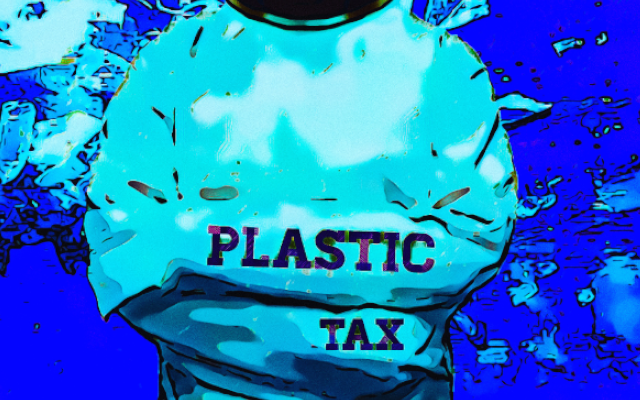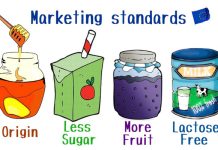The #PlasticTax is animating a diatribe, in Italy, between government and opposition political factions. But commentators on the national political theater-as well as some of its protagonists-miss the vision of a broader scenario. The #BreakFreeFromPlastic report offers some examples of the eco-logical initiatives carried out in other countries in Europe.
Plastic Tax, the debate in Italy
The Plastic Tax – like several other measures contained in the budget maneuver decided by the government, one among them the
Sugar Tax
– is being challenged as yet another unnecessary tax. While necessary, along with others, to avert the far more serious threat of a VAT increase, which would affect all citizens indiscriminately.
The so-called stakeholders, social stakeholders, in turn, are animated by the ‘here and now’. Thus, recyclers (Assorimap), plastics processors (Unionplast), consumers (Federconsumatori), and retailers (Federdistribuzione) are calling for a working table. Without rushing a measure whose serious impact on the economy and employment is feared. Strongly opposed, ça va sans dir, even by Confindustria and Plastics Europe.
The rhetoric of the rabbit suddenly popping out of the hat of a money-hungry magician, however, is false in its assumptions. Since it neglects:
– the premises. The total inattention, of policy as well as most operators and consumers, to Life-Cycle Assessment (LCA) and proper management of packaging materials following consumption,
– topicality. An undisputed and unprecedented environmental crisis. Plastic and microplastic pollution, which affects Italy and the Mediterranean far more than Northern European countries,
– the scenario. There is no debate-as would be useful-about the Eurozone and the periodic diktats imposed on the PIGS alone (Portugal, Italy, Greece and Spain). But on short, medium and long-term environmental policies to be implemented in the Old Continent. Starting with the European Union, to also involve neighboring states and trading partners.
Plastic pollution. Cognition of the problem and policies in Europe
European citizens are showing a growing awareness of the environmental crisis caused by plastics. Recent surveys show that 92 percent of citizens approve of measures to reduce single-use plastic products, 87 percent are concerned about the impact of plastic on the environment, and 74 percent are concerned about their health. Thanks to widespread information-which is lacking in Italy because the generalist media are on the leash of big advertising investors-about the ‘microplastics trouble.
Microplastics are ubiquitous and dangerous to human health. They are found in the atmosphere, as well as in irrigation and drinking water. And so they have become part of our diet, with an individual intake estimated at a total of about 5 grams per week.
The ‘circular economy package‘ is the most comprehensive reform-implemented in the European Union in 2018 and leading the way globally-to implement the so-called waste hierarchy in different industrial supply chains. This includes the ‘strategy for plastics in the circular economy,’ aimed at reducing single-use plastic pollution. Europe, it should be noted, leads in plastics consumption. Packaging accounts for 40% of consumption and recycling is less than 30%.
Single-use plastic items, the SUPs directive.
Directive (EU) 2019/904 ‘on reducing the impact of certain plastic products on the environment‘ (
Single-Use Plastics Directive
, SUPs) set out a series of measures to be taken by member states to curb the problem of ‘single-use plastic items most commonly found on beaches‘.
The problem of plastic pollution clearly cannot be solved by the solutions proposed by Big Food alone, as Greenpeace has also pointed out. Indeed, plastics must be managed ‘fromcradleto grave’ (literally, from cradle to grave). Referring first to the first two tools mentioned in the waste hierarchy, Reduction and Reuse.
Reuse, repeatedly referred to in the SUPs directive, postulates a structural revision of production and use patterns of nondurable consumer goods (e.g., food and beverages, cosmetics, detergents) contained in packaging. And it is considered to be one of the most effective solutions to address the problem of single-use plastics. With tangible economic benefits and environmental, social, cultural benefits.
In fact, the benefits of reuse far outweigh those that can be derived from other practices. Such as increasing recycling rates, which in the waste hierarchy ranks subordinate to reuse. Either packaging lightening, or simply replacing petroleum polymers with bioplastics. Following are some examples.
#BreakFreeFromPlastic, #RethinkPlastic, the report
The report just published by the Break Free From Plastic Europe movement and the European NGO alliance Rethink Plastic shows the real possibility of replacing single-use plastic, in many cases, with reusable packaging. The study focuses on some single-use plastic items, considered by the UAS directive, still widely used in food and beverage retailing.
1.A) Disposable beverage cups, the status quo.
Disposable cups made of expanded polystyrene (EPS) are banned from the SUPs directive as of July 2021. By the same date, all single-use beverage cups will be required to carry a mark indicating the presence of plastic, the proper way to handle the associated waste, and the potential negative environmental impact if disposed of inappropriately. Member states also have a duty to drastically reduce their consumption by 2026.
Cups made of plastic (polystyrene or polypropylene) or cardboard, lined inside with polymers, are now commercially available. That is, ‘alternative’ cups made of bioplastics (e.g., PLA). However, the SUPs Directive, or SUPD(Single-Use Plastics Directive), excludes from its scope only natural polymers, i.e., not chemically modified. And biodegradable and compostable plastics-though derived (in whole or in part) from renewable sources-are made from chemically modified polymers, therefore banned.
The costs of a 300ml disposable cup range from €0.02 (polystyrene), 0.03 (polypropylene, PP), 0.05 (laminated paper), 0.07 cents (PET, PLA).
Consumption is extraordinary, 2.8 billion disposable coffee cups per year in Germany, 3 billion in the UK. Less than 1 percent of cups are recycled, due to the difficulties in separating the plastic lining from the paper.
The same items in reusable format are made of plastics (polypropylene), stainless steel or glass. Silicone or plastic is generally used for the lids. Costs vary according to material and size. There are also solutions that can be reused for a limited period. Such as polystyrene cups (washable up to 100 times, €0.30 approx.) and polycarbonate cups (500 wash cycles, €0.65).
1.B) Disposable beverage cups, the solution
‘ReCup‘ is the Deposit-Refund System (DRS) adopted in Switzerland and Germany, in which nearly 3,000 distributors in more than 450 cities participate. Citizens, after paying €1 deposit per cup, get a refund when the container is returned to one of the many vendors (also available through an App). Half a million of these cups, which can be reused up to 500 times, are now in circulation.
In England, a similar initiative has been implemented withradio-frequency identification (RFID) technology. Distribution, wash cycles, returns can thus be tracked. The system is already deployed in offices, university campuses, airports and public events. From June to September 2019, more than 100 thousand uses.
2.A) Beverage containers, the problem
Beverage containers will have to be re-designed by 2024, according to the SUPD, so that the caps remain bonded to the bottles after use. PET bottles (those in use for mineral water and carbonated beverages) will have to come made of an increasing proportion of recycled plastic (>25% by 2025, >30% by 2030).
Separate collection must in turn reach 77 percent (by weight) of bottles placed on the market by 2025, 90 percent by 2029.
Plastic bottles and caps are the most widely abandoned items on European beaches. Annual consumption of single-use beverage bottles in Europe is estimated at 46 billion units. Italy stands out, due to its global leadership in bottled mineral water consumption (13.5 billion liters, or 224 liters per person, plus 1.5 billion liters exported). Italy’s stock of plastic bottles is 11 billion pieces, 80-90% of which end up in waste-to-energy plants, incinerators, and landfills. As well as being dispersed into the environment.
Producing a 500ml disposable PET bottle has varying costs in different regions, with an estimated average of €0.04. And a reusable glass container can cost 12 times as much (€ 0.50). PET But today’s proposed reusable solutions can also include the use of PET, in an obviously more durable format than disposables.
2.B) Beverage containers, the solution
In Germany, each reusable glass and plastic bottle is affixed with ‘pfand‘, empty with deposit. A deposit of € 0.08 or 0.15 on beer bottles (33-50 cl), depending on the type of glass, and € 0.15 for reusable rigid plastic. A surcharge of €0.25, on the other hand, applies to non-recyclable bottles (with a different logo).
All establishments selling bottles with ‘pfand‘ must accept the empties, when even the individual bottle was purchased elsewhere. Glass bottles undergo an average of 50 wash cycles, plastic bottles 25 cycles. The container return rate, thanks to this system, has reached 99 percent.
Moreover, the environmental impact of refillable bottles is less than that of corresponding single-use plastic items. Also from the point of view of the so-called carbon footprint:
- 68.7 kg CO2e/1000 liters for ‘refillable’ PET containers,
- 85 kg CO2e/1000 l the glass,
- 139kgCO2e/1000 l the disposable PET containers.
3) Food containers, problem and solution
Food containers made of expanded polystyrene (EPS)-those traditionally used in fast food restaurants-are banned, by the SUPD, as of July 2021. EPS and polypropylene (PP) are the most popular materials for making containers, and they often have PVC or polyethylene covers. Laminated paper and cardboard are conversely used predominantly for aluminum take-out container lids.
The commercial cost of a 700ml food container typically ranges from €0.20 to €0.80, depending on the material. Italy-along with the U.K., Germany, France and Spain-is among the top 13 countries in the world for take-out meal consumption. Fifty percent of polystyrene foam containers are incinerated, with almost all of the remaining portion ending up in landfills.
Multi-cycle resistant plastics (such as polybutylene terephthalate, PBT), glass and stainless steel, on the other hand, are the most popular materials for reusable containers.
‘Recircle‘ is the container reuse system adopted in Switzerland, once again based on deposit with security. Customers of bars, clubs, restaurants and take-aways that join Recircle can effectively ‘rent’ a take-away container by leaving a deposit of 10 CHF. Upon return, the user can request the return of the 10 CHF or obtain a clean container to use for the next meal. There are over 800 participating venues, 70,000 reusable containers in circulation.
4) Plastic plates and cutlery
Disposable plastic plates and cutlery are banned by the SUPs directive as of July 2021. This measure had garnered lively protests in Italy, which is a European leader in consumption but also in production. Moreover, such items rank seventh among the most frequently found disposable items on beaches. And the NGO ‘Ocean Conservancy‘ points to cutlery as the most deadly plastic waste seabirds, mammals and turtles.
Polystyrene cutlery costs an average of €0.15 each, €0.45 the knife, fork and spoon set. At least 10 times less than reusable, steel or bamboo alternatives. Disposable plates in turn, made of polystyrene or paper laminated with a polymer, have an average cost of €0.05. Single-use alternatives made of compostable materials, after all, are not a solution to the ecological crisis because the short life cycle associated with consumption does not justify the expenditure of resources required for production.
‘LessMess‘ and ‘ReCircle‘ are the systems adopted in the UK and Germany for deposit with deposit of reusable tableware. The user pays the deposit when he or she receives the meal and gets a refund upon return, after consumption. The system is also very effective at festivals and outdoor events, where reusable tableware is made available to all attending caterers who refer to a central drop-off washing service.
Interim conclusions
Food packaging management is destined for a radical and compelling transformation. Taxes on single-use items are the first step needed to spur a turnaround. However, they must come with tangible incentives for the consumAtors themselves, such as a reduction in VAT on food products sold and served in reusable packaging. Only in this way can they be motivated to change the consumption pattern, without, among other things, significantly reducing tax revenues in the start-up phase.
Business operators on the other hand can already benefit from significant tax credits on investment in research and development. Rather, the government will have to hurry in implementing the incentives provided by the Growth Decree for SMEs and innovative startups. And above all, implement the Third Sector Code so that ETSs are the ones to drive social innovation toward sustainable and participatory development models marked by the circular economy.
The analysis of the various projects mentioned above shows potential for growth-including economically and in terms of employment, in the various territorial districts-that cannot be overlooked for short-term electoral conveniences nor for lack of vision on the part of the operators involved. For once in a while, even in Italy, a system-country-wide strategy should be shared.
Consumers will have to learn to accept slightly worn, but not therefore less safe, packaging for great and convenient food. Industries will be able to devote research and development to finding materials that are durable, easy to wash and sanitize, and strictly Made in Italy. And new enterprises, including social enterprises, will be able to develop environmentally friendly washing, transportation and storage services for the public and private sectors. Mitigating water and environmental impacts through the use of electricity from renewable sources and the use of electric vehicles, for example.
Dario Dongo and Luca Foltran
Notes
(1) See EU dir. 2019/904, ‘on reducing the impact of certain plastic products on the environment,’ https://eur-lex.europa.eu/eli/dir/2019/904/oj?locale=it
(2) S. Miller, M. Bolger, L. Copello (2019). Reusable solutions: How governments can help stop single-use plastic pollution. 3Keel, Oxford, United Kingdom. A study by the Rethink Plastic alliance and the Break Free From Plastic movement. https://plasticchange.org/wp-content/uploads//2019/10/reusable_solutions_how_governments_can_help_stop-single_use_plastic_pollution.pdf









